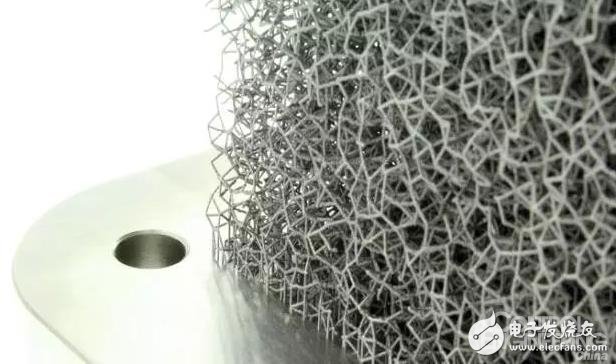3D printing technology can reduce manufacturing costs and improve production efficiency by reducing mold costs, reducing materials, reducing assembly, and reducing development cycles. Then, is it possible to use the original design thinking and the control method for manufacturing cost directly to the additive manufacturing method of 3D printing to give play to the advantages of 3D printing? In the face of 3D printing technology, is the company focusing on the impact of 3D printing on manufacturing costs, or is it looking at the overall situation?
The application engineer of Proto Labs, a large-scale 3D printing service company in the United States, summarized six design elements to analyze how to reduce the additional manufacturing cost brought by 3D printing, and better use 3D printing to reduce manufacturing costs and improve the manufacturing cost. Advantages in terms of overall benefits.
Many principles followed by well-designed 3D printed parts are similar to injection molding, such as: using a gradual transition between adjacent surfaces; avoiding large differences between cross-sectional area and part volume; avoiding occurrence on finished parts Sharp corners of residual stress; unsupported thin-walled structures should not be too high, otherwise warpage will occur. Please refer to the extended reading: Metal 3D Printing - Additive Manufacturing Design Guide (on)
--2. Abandon the traditionTypical 3D printed parts often have bionic designs, such as honeycomb structures or complex lattice structures. Don't be afraid to use this structure when designing, as long as they create lighter, stronger parts.

It is not necessary to avoid the use of a hole-like structure in the design, since the drilling of the part in the invisible part by conventional manufacturing means increases the waste of material, resulting in an increase in cost.
However, it should be noted that in the manufacture of additive materials, especially in the selection of laser-melted metal 3D technology, it is necessary to consider whether to add the support structure of the hole and the deformation of the lower surface. In some cases, consider using tears. A drop-shaped or hexagonal hole-like structure instead of a circular hole is a better design. Please refer to the extended reading: Metal 3D Printing - Additive Manufacturing Design Guide (below)
3D printing technology enables free modeling and brings a lot of space for part design innovation. For example, 3D printing technology can produce parts with many holes, but this does not mean that parts must be designed in this way.
This is because many companies realize that 3D printing technology can be used for small-volume production of parts, but once the output required by the company increases, it still needs to be converted into traditional processes such as machining and casting. In this case, design In the early stages of design, the division needs to consider the manufacturing process used in the future mass production of parts to achieve the same design, so as to make a trade-off in design.
It is important to conduct manufacturability (DFM) analysis early in the design cycle to ensure that the company achieves cost-effective production throughout the part lifecycle.
In some 3D printing processes, support structures need to be added to the printed parts to prevent curling and warping of the parts. For example, when machining metal parts with a selective laser melting device, it is usually necessary to add support for the overhang structure; stereo light curing (SLA) 3D printing There are also cases where it is necessary to add a support structure.
The metal support structure formed in the printing needs to be removed by machining or the like after the printing is completed, and the plastic supporting structure needs to be removed by a hand-held sanding machine or the like. But no matter what kind of support, it will increase the cost and delay the manufacturing cycle. Therefore, the design should consider avoiding adding support structures to the parts by changing the design and changing the placement of the parts.
In order to meet the tolerance requirements of metal parts, it is necessary to use secondary processing such as machining, but excessive pursuit of tolerance requirements will affect the design and manufacture of 3D printed parts, for example, excessive pursuit of precision. The number of layers is printed, resulting in an increase in printing time and printing cost. Further reading: Challenges and solutions in machining 3D printed parts; 3D post-processing "doorways"
With proper design strategies, it is sometimes possible to reduce the use of post-printing processes, such as overhanging structures (lower layers), which are generally less surface-finished than vertical and upward-facing surfaces, if you want to produce detailed features with the best accuracy, It is then best to position these features on the top surface of the part at design time.
Although the material cost and equipment cost of 3D printing are higher than the mature traditional manufacturing process, don't be discouraged.
When designing 3D printed parts, we should pay close attention to the advantages of 3D printing technology in implementing complex and lightweight structures and functional integrated parts, and stimulate the role of 3D printing in component design optimization. Extended reading: The four ways to achieve lightweight in 3D printing means that in the face of 3D printing technology, if you only pay attention to the impact of this technology on manufacturing costs, and ignore the comprehensive consideration of the technology in reshaping product design and function, and Reshaping the potential of the supply chain will make companies miss out on the combined benefits of 3D printing.
CIXI LANGUANG PHOTOELECTRIC TECHNOLOGY CO..LTD , https://www.cxblueray.com